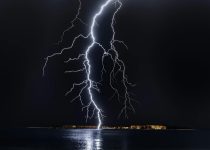What Are the Top Mistakes When Installing Landscape Lighting?
When installing landscape lighting, it's easy to overlook critical aspects that can lead to costly mistakes. You might underestimate the importance of planning or ignore the natural features of your yard. Choosing the wrong fixtures or improperly placing lights can result in a less effective system. Let's explore the common pitfalls that can turn your lighting project into a source of frustration rather than the enhancement you envisioned.
Table of Contents
Key Takeaways
- Failing to create a clear lighting plan can lead to uneven illumination and poor aesthetics.
- Ignoring natural features and light placement can result in a lack of depth and interest in the landscape.
- Choosing incorrect fixtures or inadequate lighting types can detract from functionality and ambiance.
- Improper installation techniques, such as neglecting wiring safety, can pose hazards and shorten fixture lifespan.
- Overlooking maintenance needs, like regular cleaning and bulb replacement, can diminish lighting effectiveness over time.
Overlooking the Importance of Planning
While you might be eager to install your landscape lighting, overlooking the importance of planning can lead to costly mistakes.
First, take time to assess your space and identify key areas to illuminate, like pathways, trees, or architectural features. Sketch a layout that highlights these spots, ensuring you balance aesthetics and functionality.
Consider the types of fixtures you'll use; each serves a different purpose. Think about the power source, too—will you use solar lights or electric?
Planning also involves setting a budget to avoid overspending. Finally, check local regulations regarding lighting installations.
Ignoring the Landscape's Natural Features
When you install landscape lighting, neglecting the natural features of your yard can diminish the overall effect you're trying to achieve. Your trees, shrubs, and flower beds deserve to be showcased, so take time to highlight their beauty.
Instead of just lighting pathways or structures, consider how shadows and light interact with your landscape. Use your fixtures to accentuate unique elements, like a beautiful tree trunk or a stunning rock formation. By doing this, you create depth and interest, transforming your yard into a captivating space.
Using Inadequate Lighting Types
Choosing the wrong types of lighting can severely impact the effectiveness of your landscape lighting design.
It's crucial to select fixtures that match your needs—whether you want to highlight architectural features, illuminate pathways, or create ambiance.
Using inadequate lighting types, like overly bright floodlights in intimate spaces or weak decorative lights in expansive areas, can lead to unsatisfactory results.
You might find that the wrong color temperatures clash with your landscape, making it feel uninviting.
Additionally, energy-efficient options like LED fixtures can save you money and provide the right brightness without overwhelming your outdoor space.
Failing to Consider Light Placement
When setting up your landscape lighting, where you place the lights really matters.
You want to avoid overlighting certain areas, overlook important landscape features, and ensure safety isn't compromised.
Taking the time to plan your light placement can make all the difference in creating a beautiful and functional outdoor space.
Avoiding Overlighting Areas
Although landscape lighting can enhance your outdoor space, failing to consider light placement can lead to overlighting certain areas, creating an uninviting atmosphere.
To avoid this mistake, keep these tips in mind:
- Identify focal points: Focus on key features that deserve attention, like trees or pathways.
- Use layered lighting: Combine ambient, task, and accent lighting for a balanced look.
- Adjust brightness levels: Ensure lights aren't too bright; softer lighting can create a cozy environment.
- Test before installation: Walk around your space at night to see how the lights interact and make adjustments as needed.
Ignoring Landscape Features
Failing to consider the unique features of your landscape can lead to poorly placed lights that overshadow your outdoor space instead of enhancing it. You should focus on how light interacts with elements like trees, pathways, and garden beds. Proper placement can highlight these features, creating a welcoming atmosphere.
| Landscape Feature | Suggested Lighting Approach |
|---|---|
| Trees | Upward lighting for canopy effect |
| Pathways | Soft ground lights for safety |
| Garden Beds | Spotlights to accentuate blooms |
| Patios | String lights for ambiance |
| Water Features | Submersible lights for reflection |
Neglecting Safety Concerns
Proper light placement is crucial to ensuring safety in your outdoor spaces.
When you neglect safety concerns, you risk accidents and injuries.
Here are four key factors to consider for effective light placement:
- Pathways: Illuminate walkways to prevent trips and falls.
- Steps: Make sure stairs are well-lit to avoid missteps.
- Obstructions: Avoid placing lights near low-hanging branches or other obstacles that could interfere with visibility.
- Light Direction: Position lights to reduce glare and provide adequate illumination without blinding anyone.
Neglecting to Account for Energy Efficiency
When installing landscape lighting, it's easy to overlook energy efficiency, but that can cost you in the long run.
Choosing inefficient bulbs or ignoring solar options can significantly increase your energy bills and environmental impact.
Choosing Inefficient Bulbs
Many homeowners overlook the importance of selecting energy-efficient bulbs for their landscape lighting. Choosing inefficient bulbs can lead to higher electricity bills and a larger environmental footprint.
Here are four key reasons to prioritize energy-efficient options:
- Cost Savings: Energy-efficient bulbs consume less electricity, reducing your monthly energy costs.
- Longevity: These bulbs typically last much longer, meaning fewer replacements and less waste.
- Brightness: Modern energy-efficient bulbs often provide better illumination, enhancing your landscape's beauty.
- Heat Reduction: They produce less heat, making your outdoor areas safer and more comfortable.
Ignoring Solar Options
While it might be tempting to stick with traditional lighting methods, ignoring solar options can limit your landscape's potential. Solar landscape lights are energy-efficient, cost-effective, and environmentally friendly. By harnessing the sun's power, you can enjoy beautiful lighting without the high electricity bills.
Here's a quick comparison of solar versus traditional lighting:
| Feature | Solar Lighting |
|---|---|
| Energy Source | Solar power |
| Installation Ease | No wiring needed |
| Cost | Lower long-term expenses |
| Maintenance | Minimal upkeep needed |
| Environmental Impact | Eco-friendly |
Skipping the Professional Assistance
Although you might feel confident tackling your landscape lighting installation on your own, skipping professional assistance can lead to costly mistakes. Here are four reasons why you should consider hiring a pro:
- Expertise: Professionals have the knowledge to properly assess your space and determine the best lighting solutions.
- Time-Saving: Hiring an expert can save you hours of trial and error, letting you enjoy your beautifully lit landscape sooner.
- Quality Work: Pros ensure that all installations are done correctly, reducing the risk of malfunctions or safety hazards.
- Design Insight: They can provide creative ideas that enhance your landscape's aesthetics, turning your vision into reality.
Investing in professional help can ultimately save you time, money, and frustration in the long run.
Disregarding Local Regulations and Codes
Ignoring local regulations and codes can lead to serious complications when installing landscape lighting. You might think your project is straightforward, but local rules often dictate where and how you can install lighting.
Failing to comply could result in fines or forced removal of your fixtures. It's essential to check zoning laws, electrical codes, and any homeowner association guidelines before you begin. Additionally, some areas require permits for outdoor lighting installations.
By doing your homework, you can avoid headaches down the line. Remember, following these regulations ensures not only your safety but also enhances the aesthetic of your property.
Don't overlook this critical step; it can save you time, money, and frustration in the long run.
Frequently Asked Questions
What Is the Best Time of Year to Install Landscape Lighting?
The best time to install landscape lighting is during spring or early fall. You'll enjoy optimal weather conditions, allowing you to work comfortably, and your plants will be in full bloom, enhancing the lighting's impact.
How Can I Enhance the Security of My Home With Lighting?
You can enhance your home's security by installing motion-sensor lights, illuminating dark areas, and using timers for outdoor lighting. This deters intruders and creates a welcoming atmosphere while ensuring safety for you and your family.
Are Solar Lights Effective for Landscape Lighting?
Solar lights can be effective for landscape lighting if you choose high-quality options. They're energy-efficient, easy to install, and provide ambient light. Just make sure they get enough sunlight during the day for optimal performance.
What Maintenance Is Required for Landscape Lighting Systems?
You'll need to regularly check and clean fixtures, replace bulbs as needed, and ensure wiring's intact. Seasonal inspections help prevent issues, while adjusting timers or sensors keeps your landscape lighting efficient and functional year-round.
Can I Install Landscape Lighting Myself Without Professional Help?
Yes, you can install landscape lighting yourself without professional help. Just make sure you plan your layout carefully, choose the right fixtures, and follow safety guidelines. It's a rewarding project that enhances your outdoor space beautifully.



